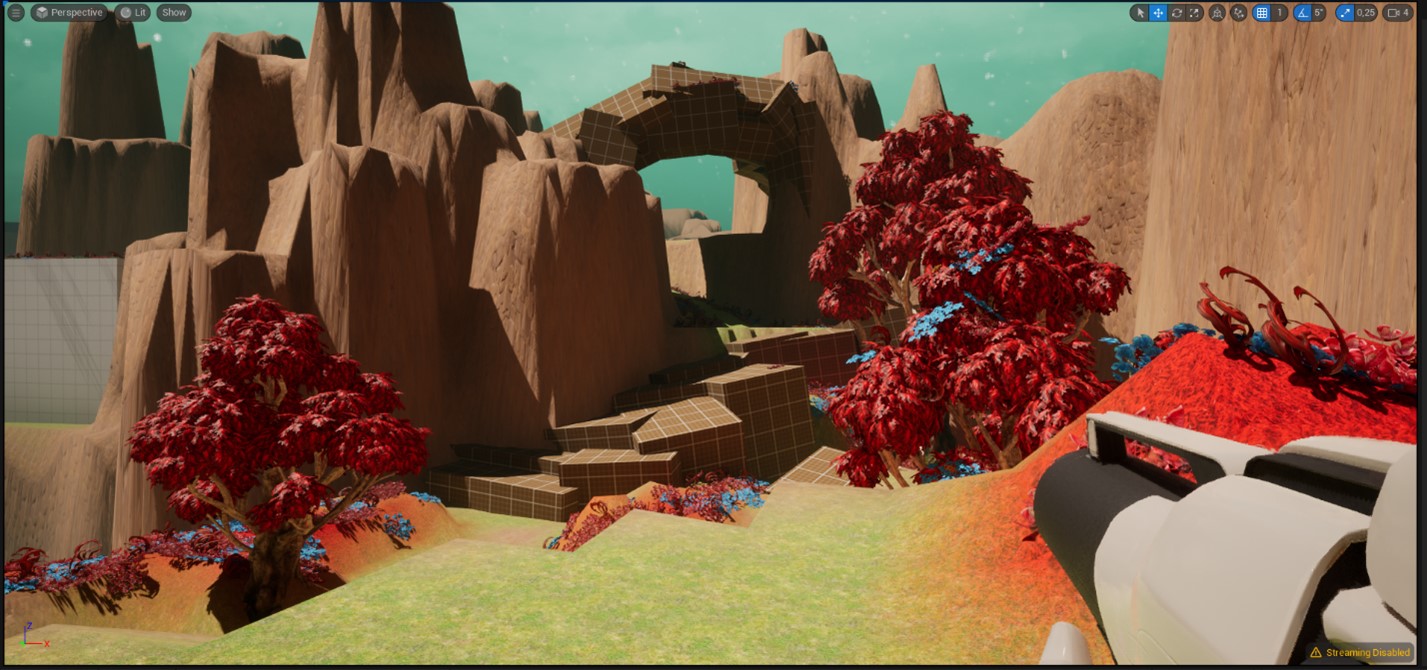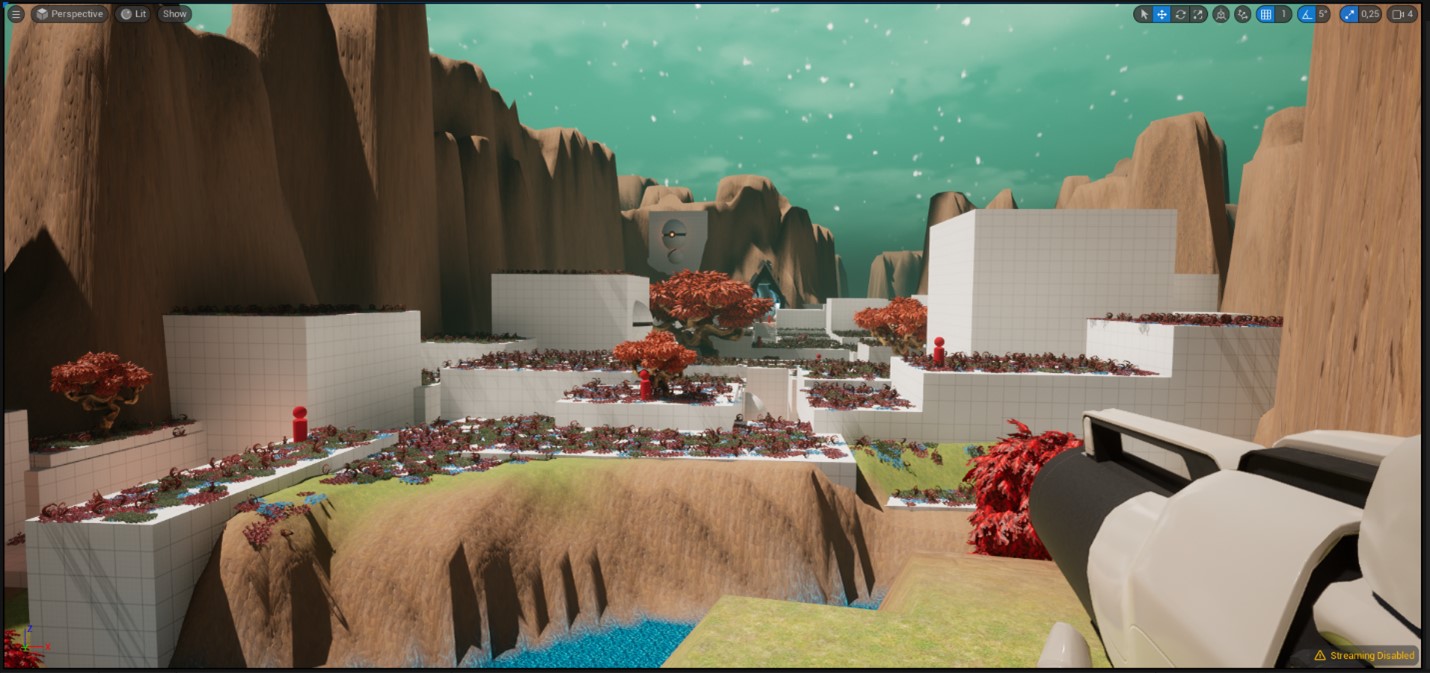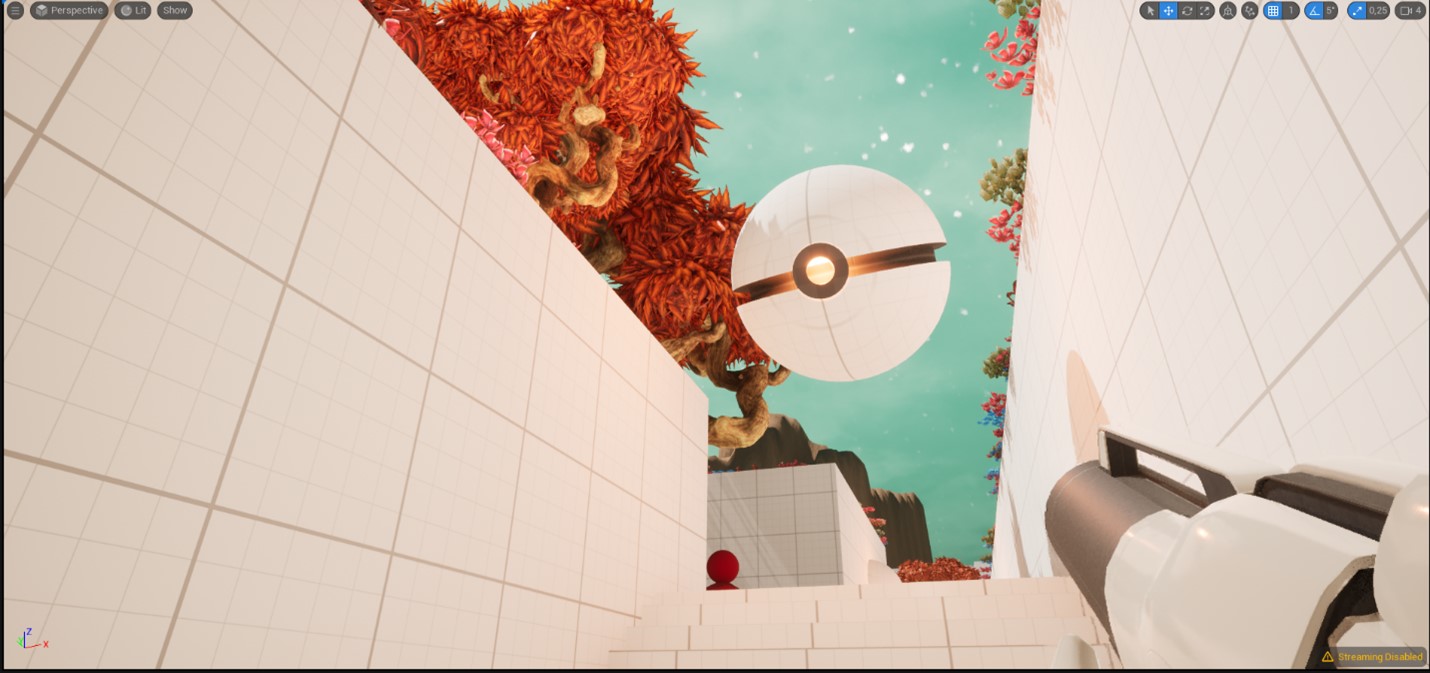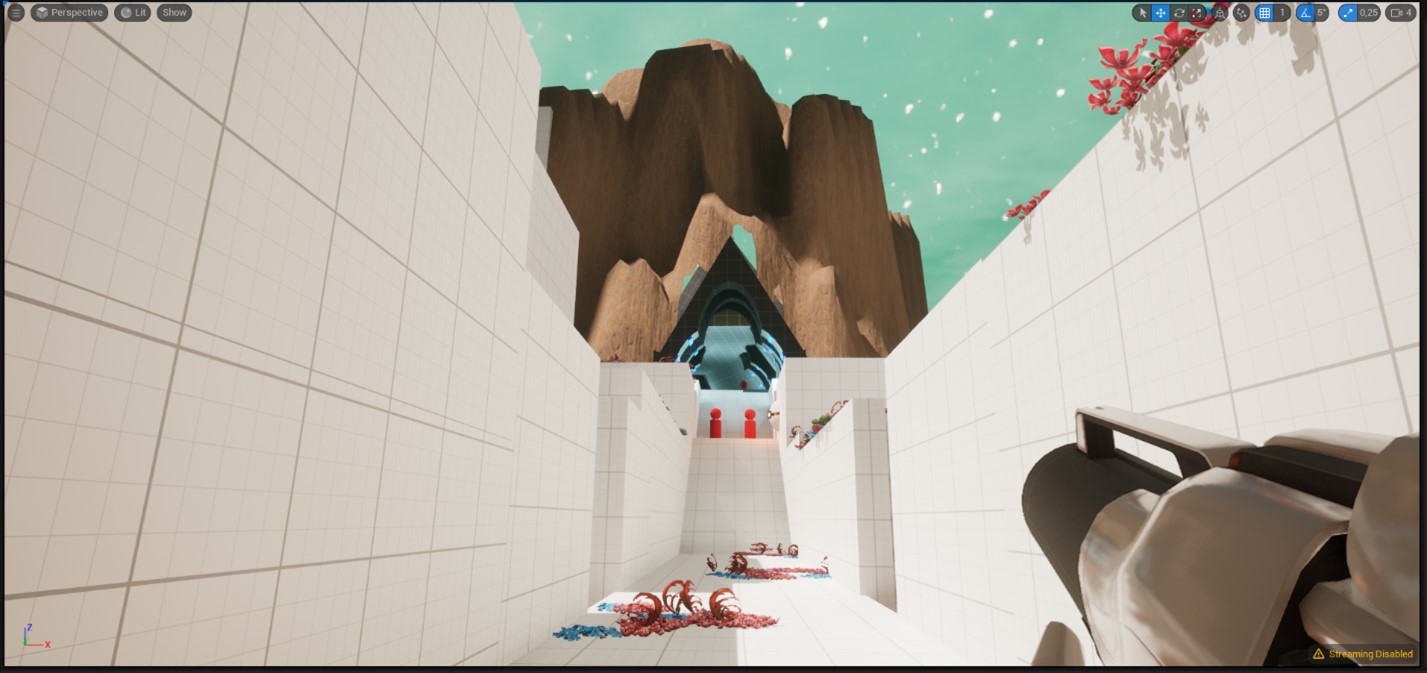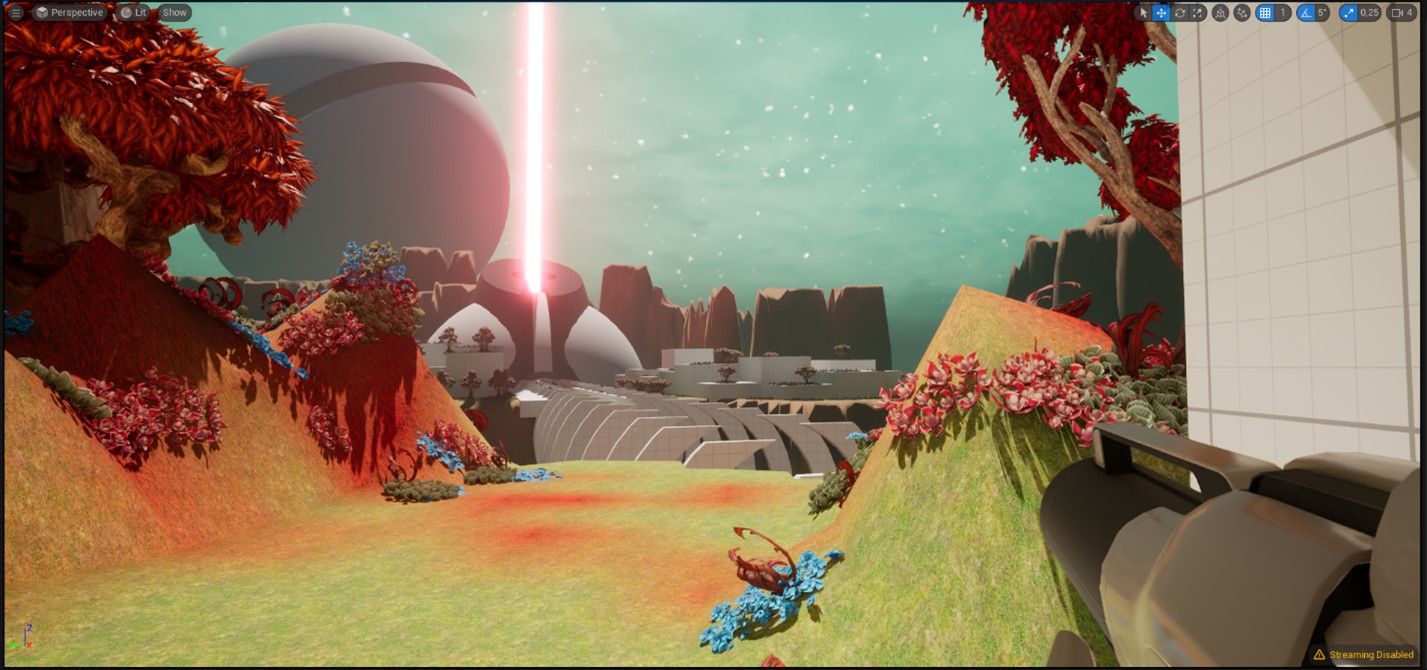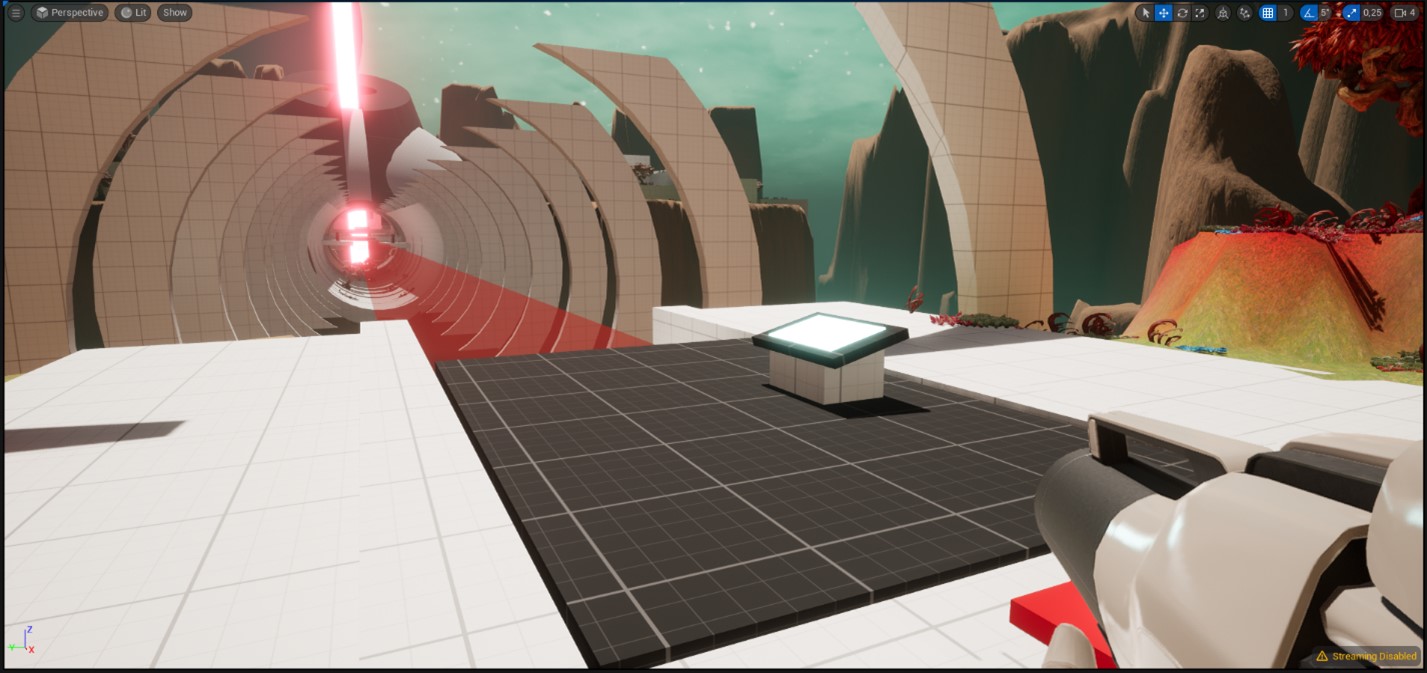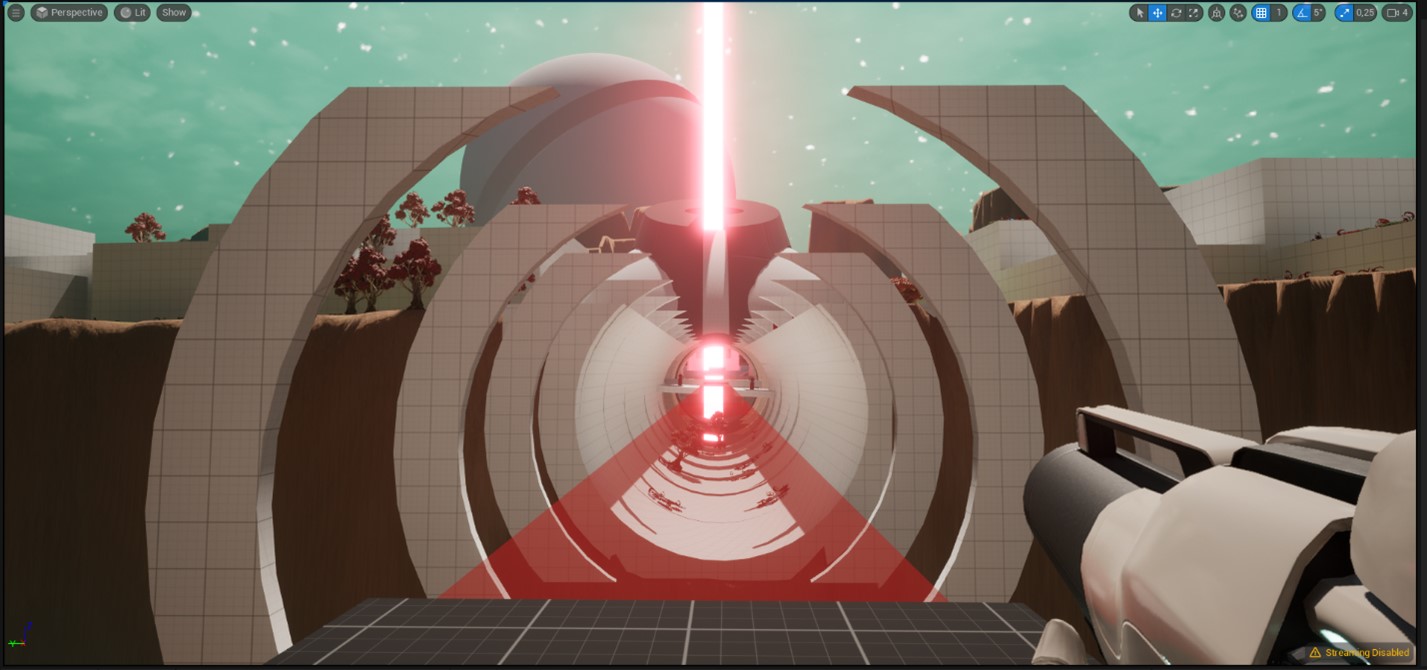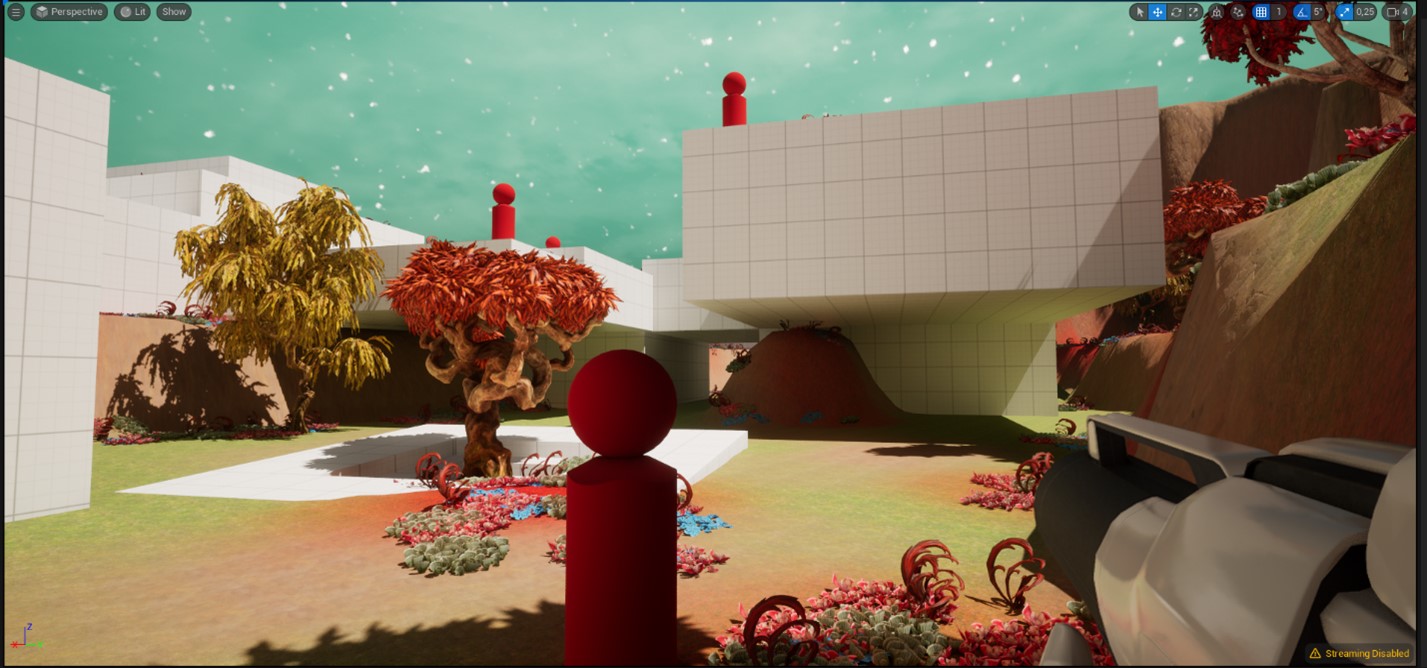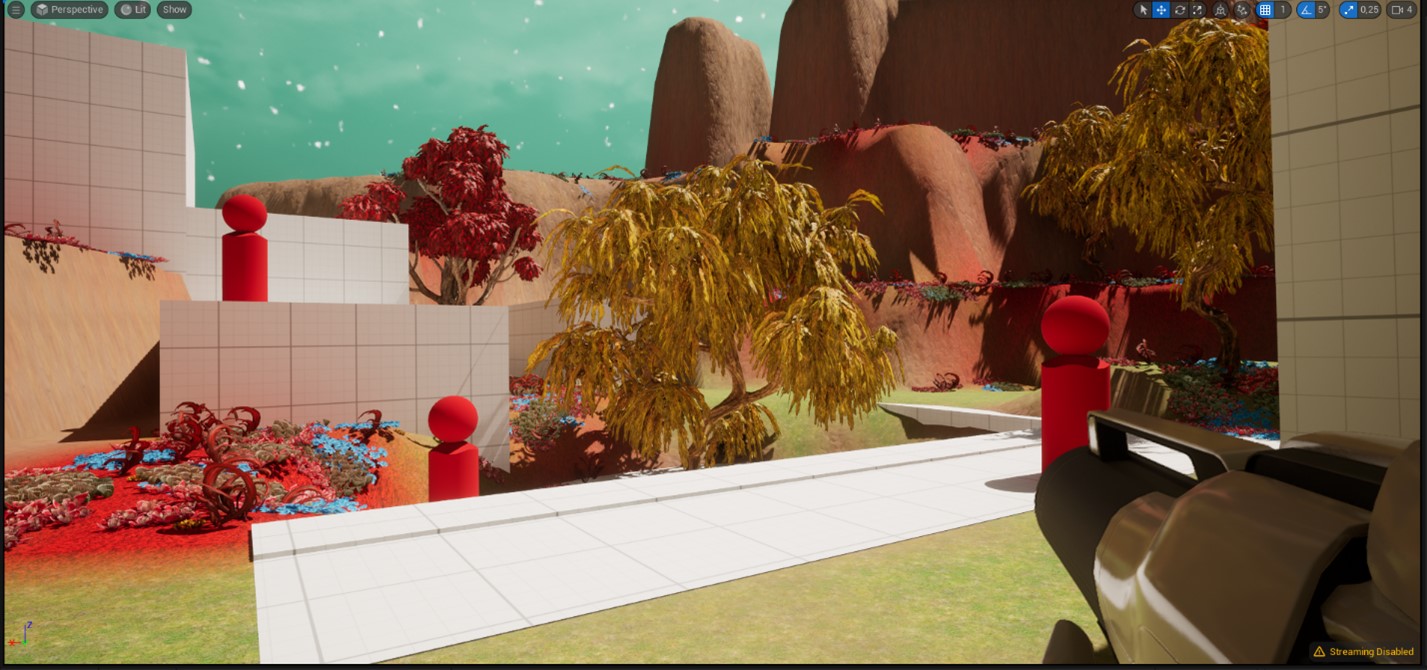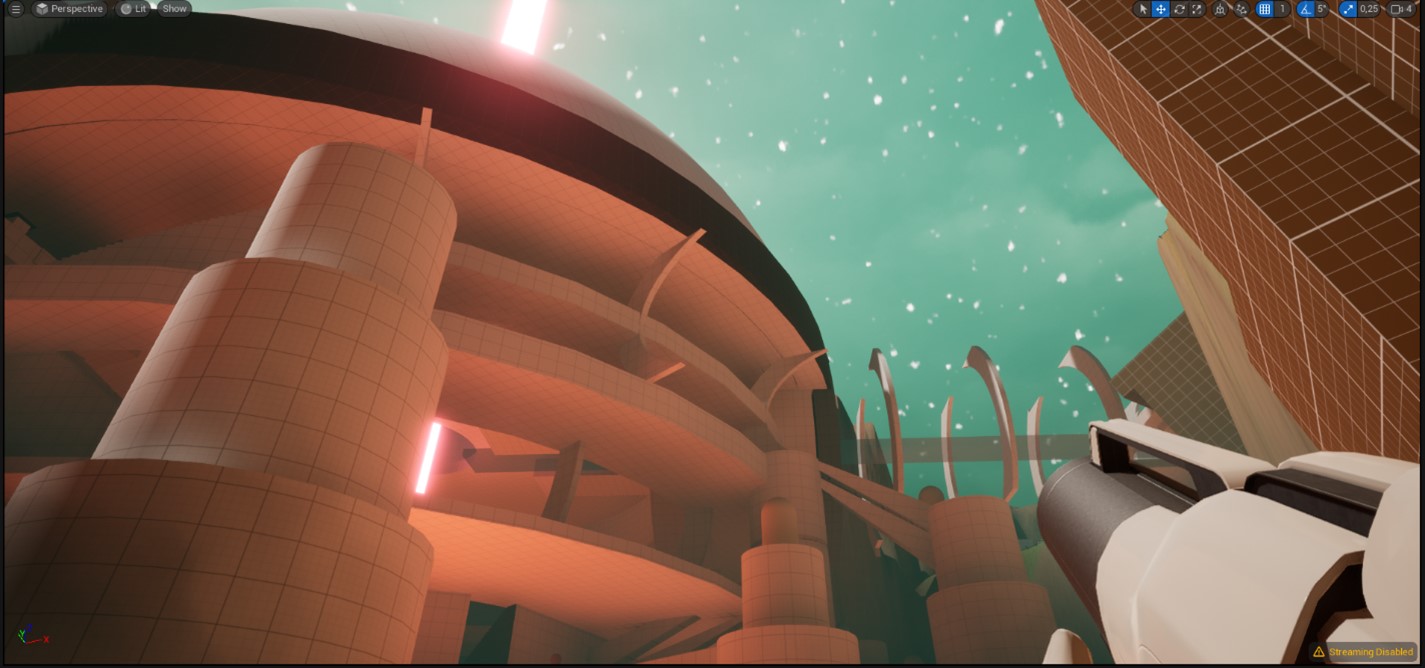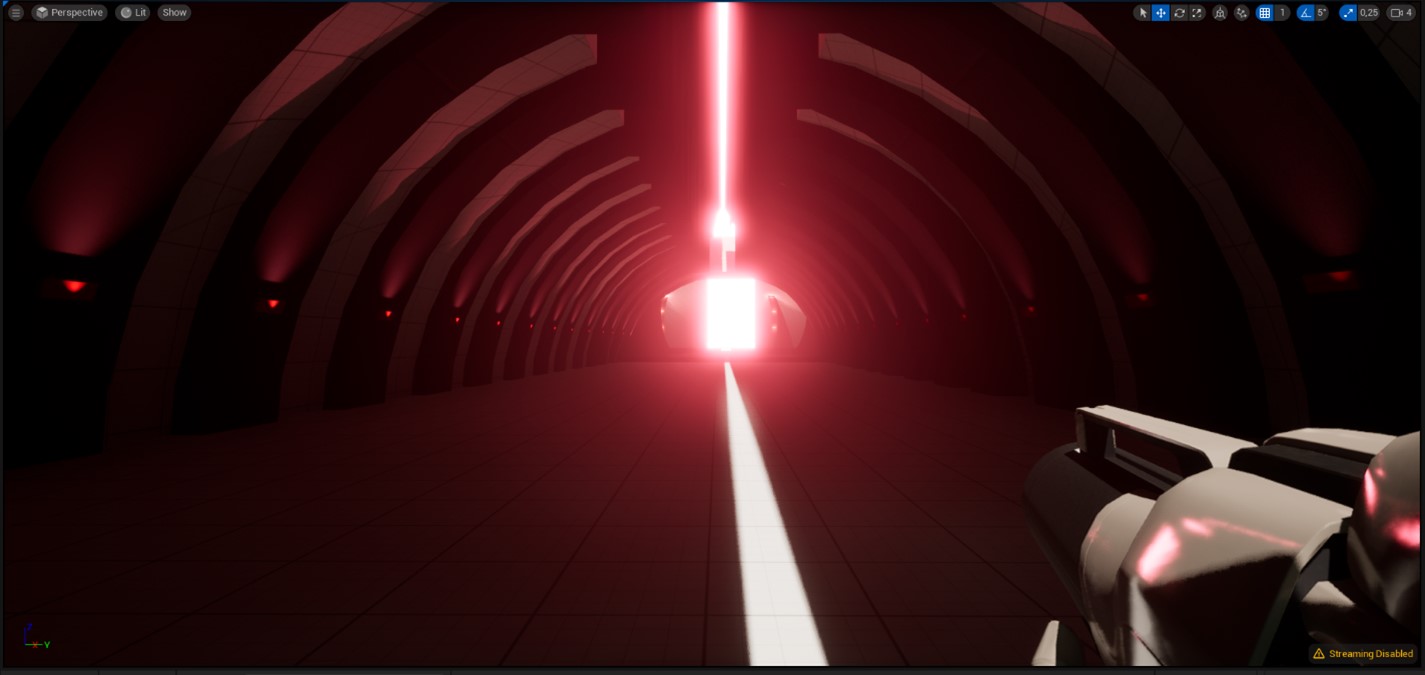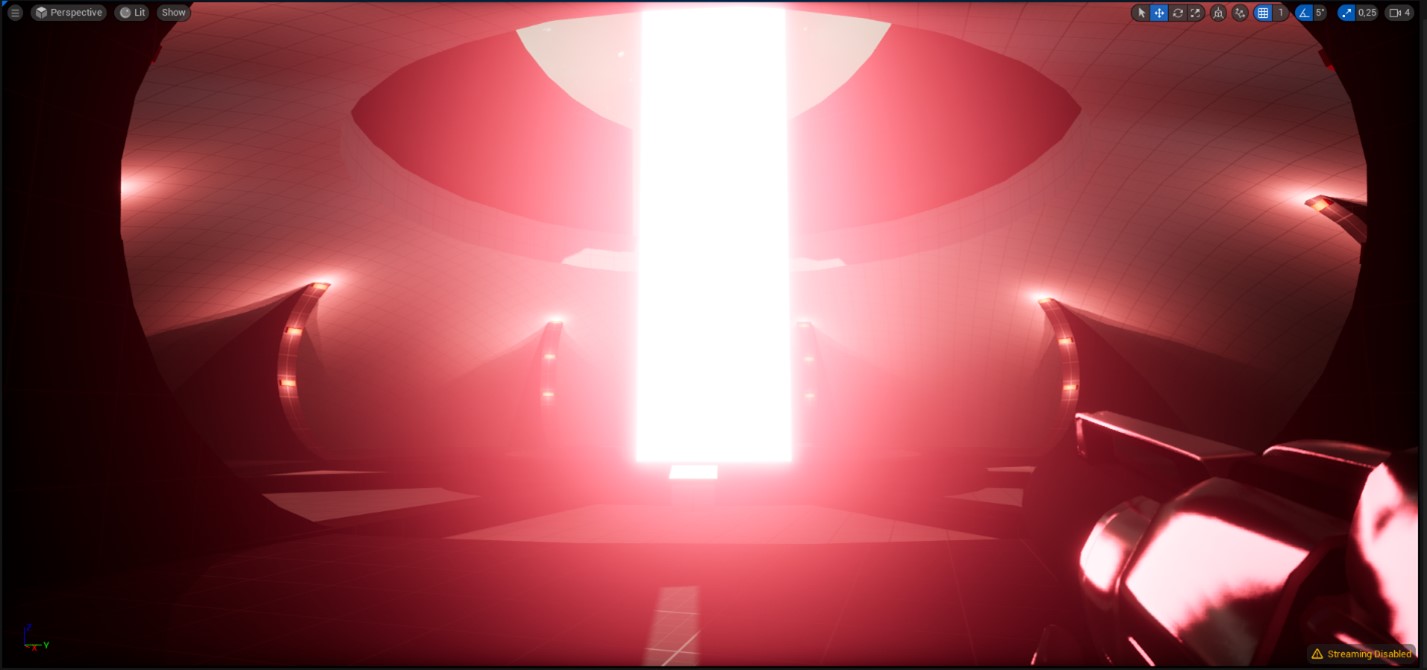Energy Core Shooting
Role: Level design
Game Engine: Unreal Engine 5
Genre: FPS, Action
Layout
This is a personal project I made as an exploration on first person shooters inspired specially by Destiny 2. I began my design process by doing some research on shooters such as Halo, Destiny 2 and Titanfall 2, to understand their most important features. Most important things I would highlight are the non/stopping flow of the levels and the inspirational and engaging spaces the game provides. The purpose of the level is for the player to fight their way through the map to reach and deactivate the energy core inside the power plant. With that in mind, I started structuring the level itself by thinking about the spaces that I wanted to be present in the map and the relation between them. The image below is a Node Diagram showing such spaces. It does not represent the space itself, but the relation between spaces, even if it is just a visual relation.
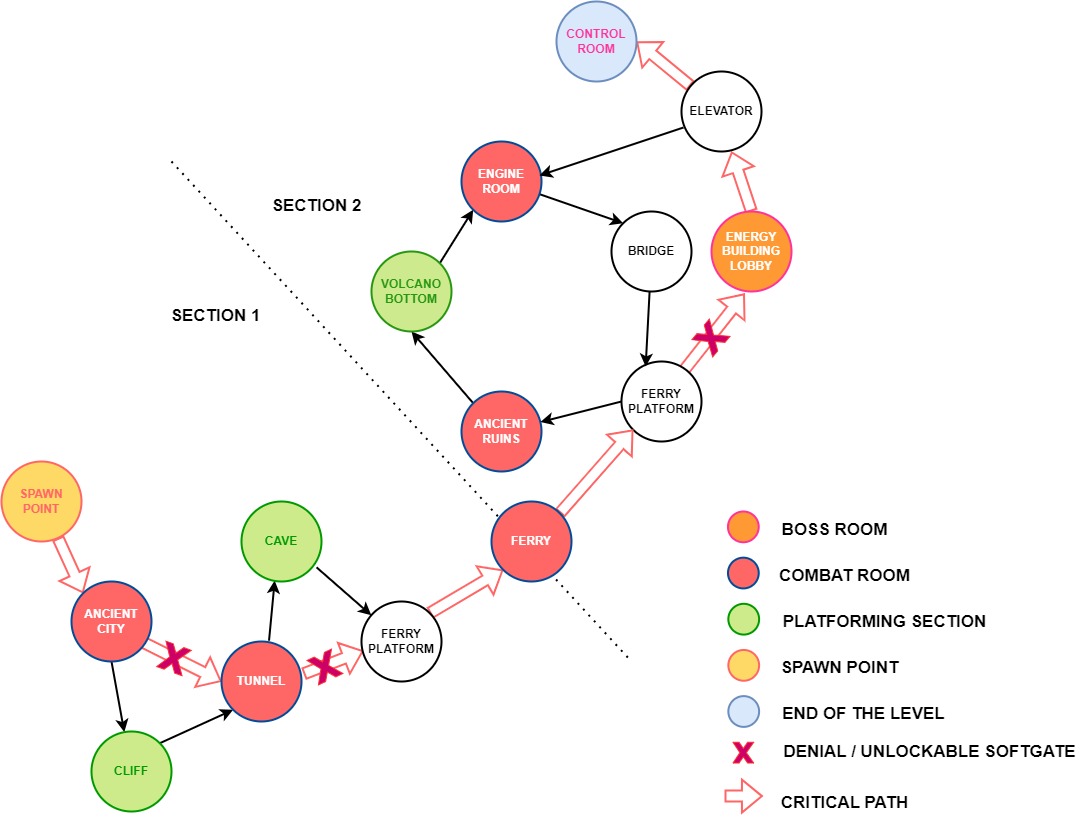
FPS games have a linear flow through the level, but sometimes there are cases where the player must go back over their steps, so I opted to do so. With that in mind I posed a flow from the spawn point to the objective of the level, which is the control room of the Power Generation Center. After several sketches I finally got to organize each space and their relations as in the layout shown below. I organized the map into three sections: the spawn section, which is the opening view and the intro to the level; section 1 (the city section), which is a path through some ancient ruins of a city, and finally the Power Generation Center (section 2), which also includes some other ruins prior to the Power Core. All sections are connected through transition spaces (bridges, mainly).

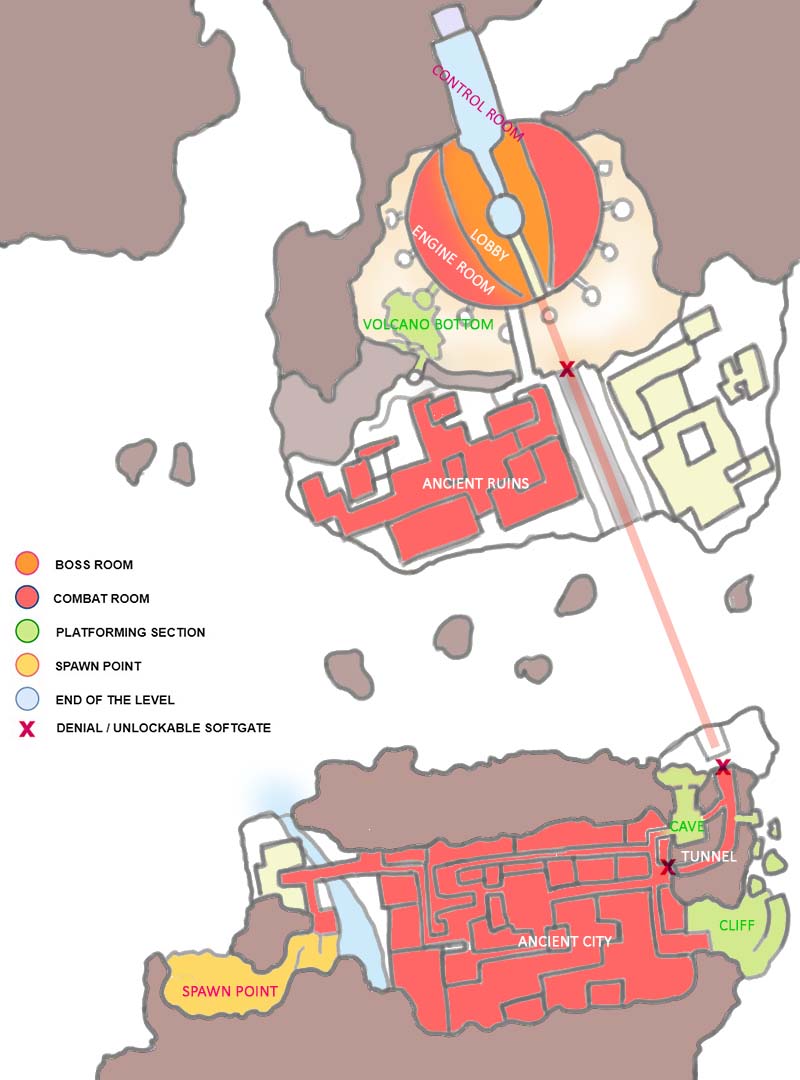
Along with the sections and the spaces, I thought about the platform, combat, and puzzle areas as part of the space itself, because I wanted to keep them within the general flow of the level instead of having segregated and limited areas for such purposes. That’s especially true for the puzzles, which must be solved by exploring the map and going over certain zones, and for the combat areas, since the combat is spread all over the map.

Along with the sections and the spaces, I thought about the platform, combat, and puzzle areas as part of the space itself, because I wanted to keep them within the general flow of the level instead of having segregated and limited areas for such purposes. That’s especially true for the puzzles, which must be solved by exploring the map and going over certain zones, and for the combat areas, since the combat is spread all over the map.
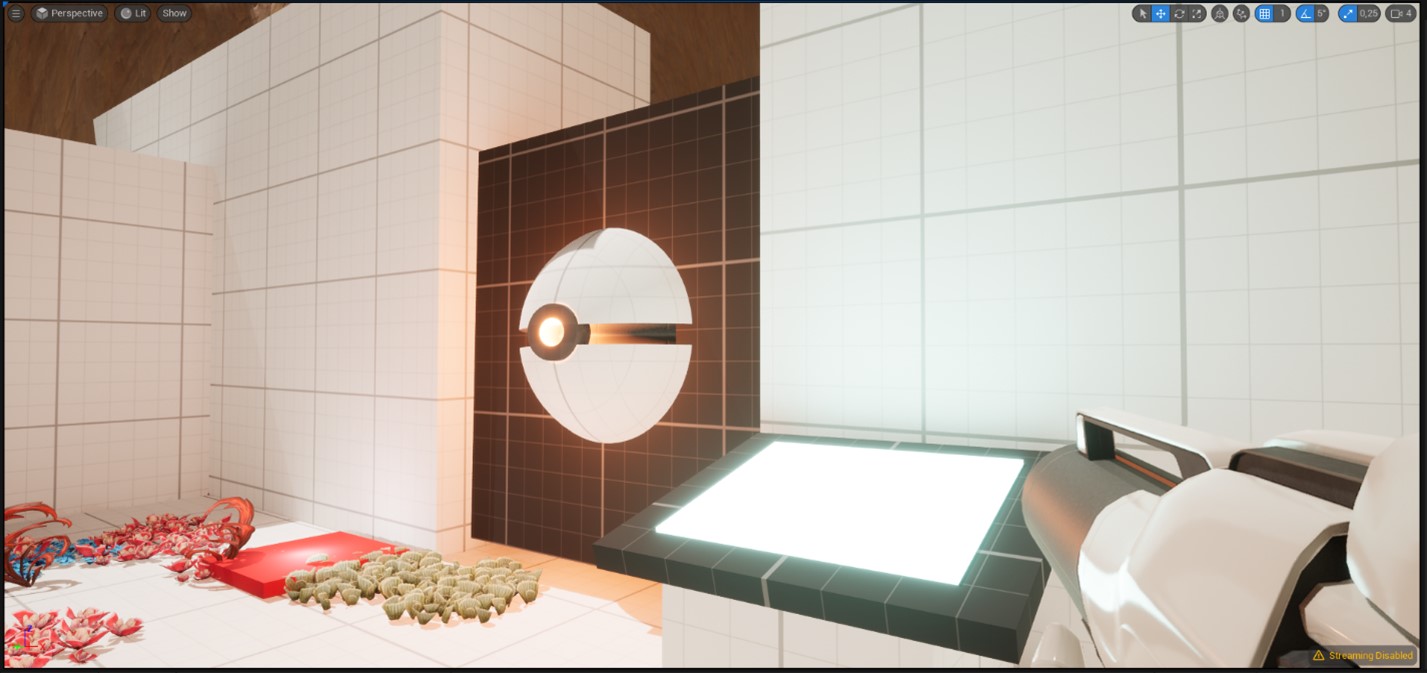
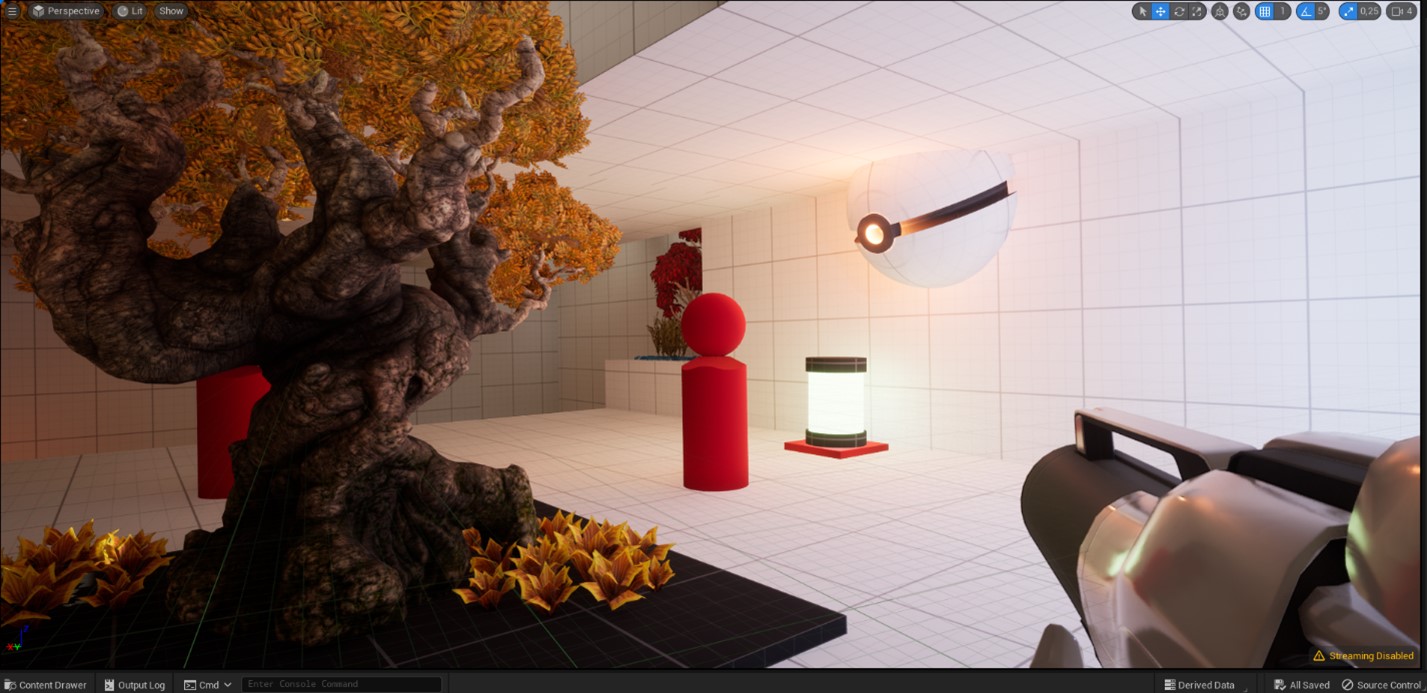
For the platforming sections, I kept the mechanics as simple as the jumping provided by the UE5 first person template. I designed the platforming sections on that premise, but I also though about making them work for mechanics such as hook grappling and climbing.
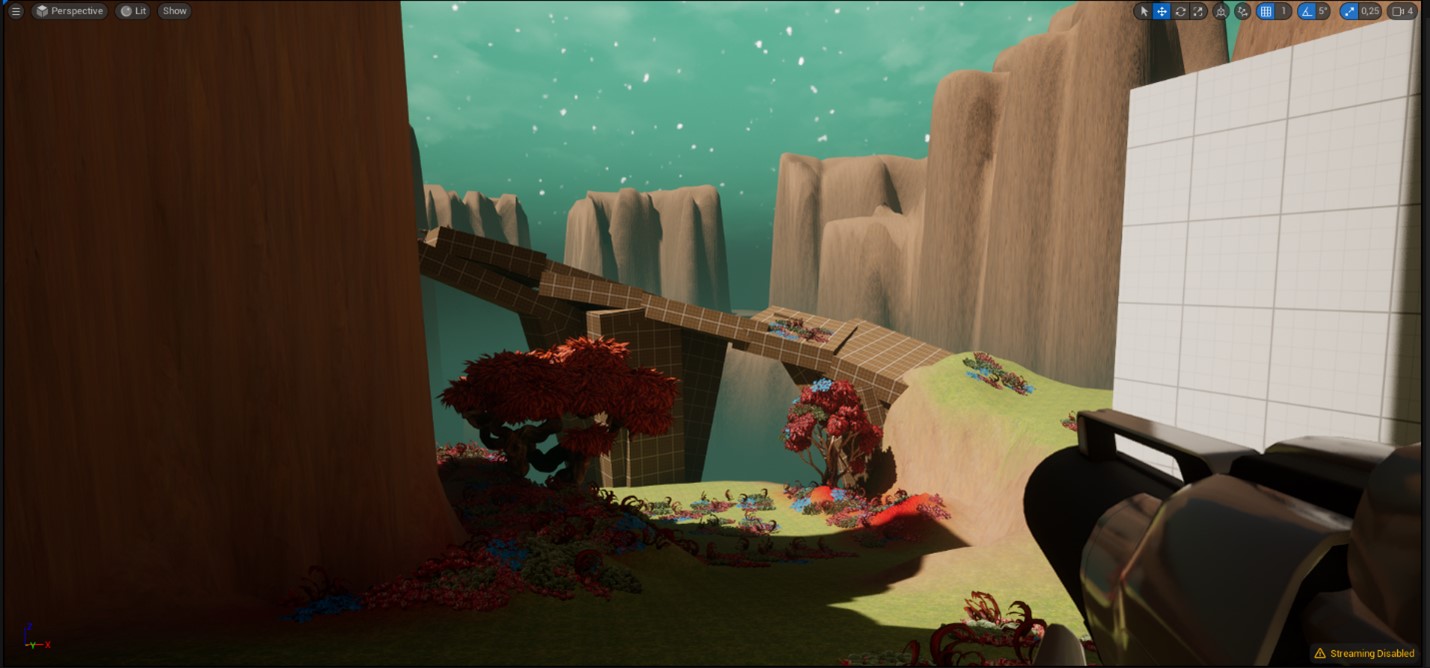
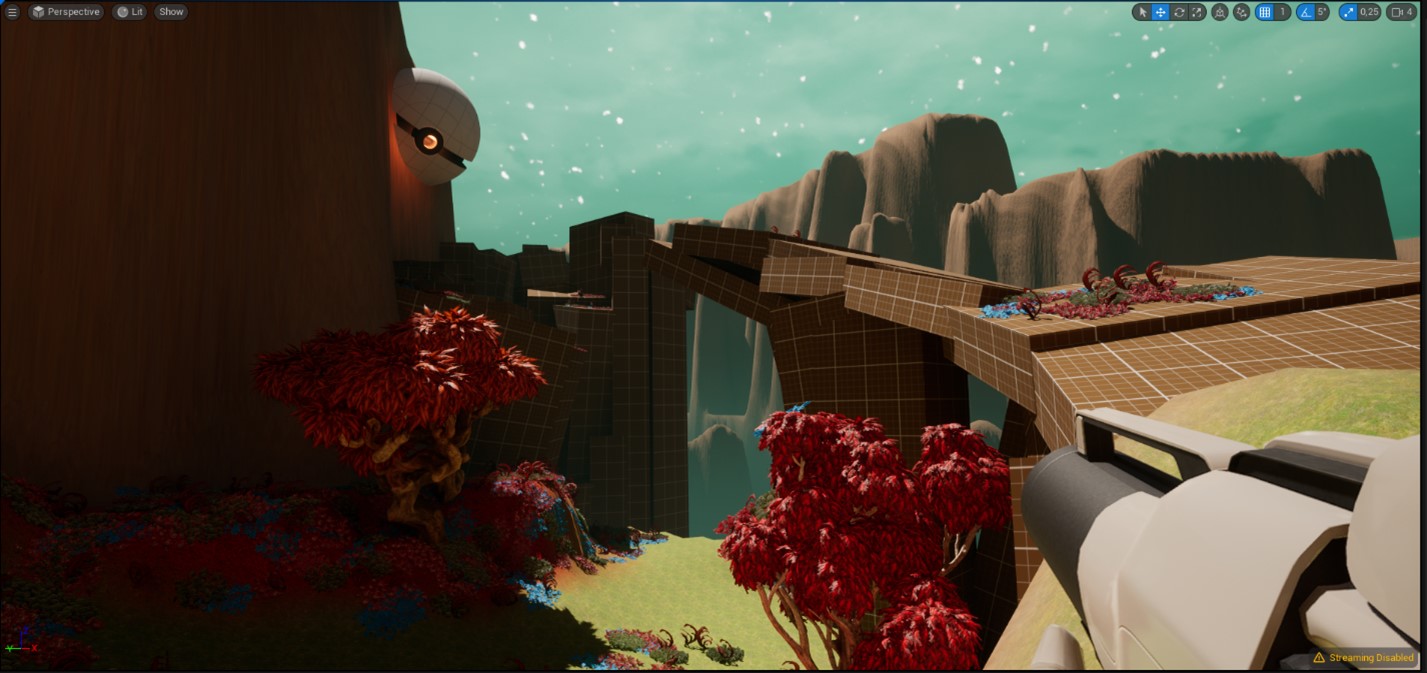
Although the combat is done all the way through the level, there are some areas that are heavily focused fighting, as shown in the pictures below. Such spaces have considerable differences in heigh to give some advantage, either to the player or the enemies, as well as cover objects and wide spacing to engage into battle.

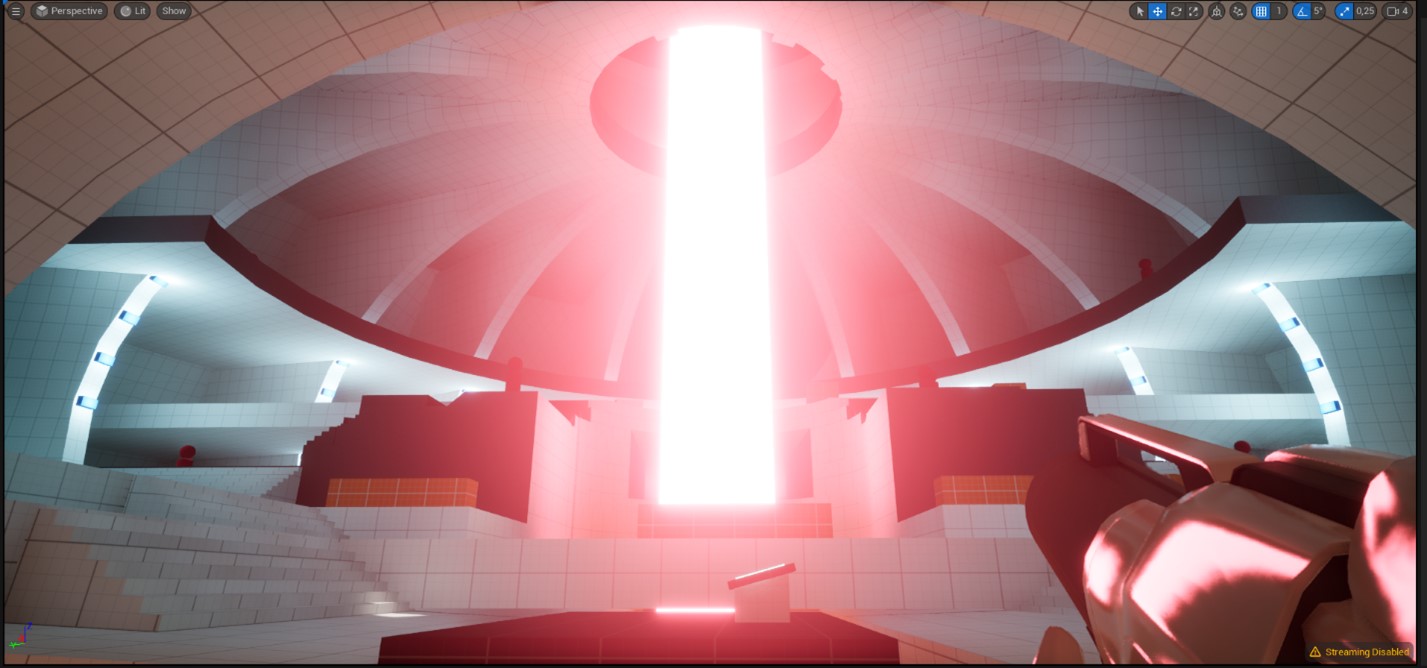

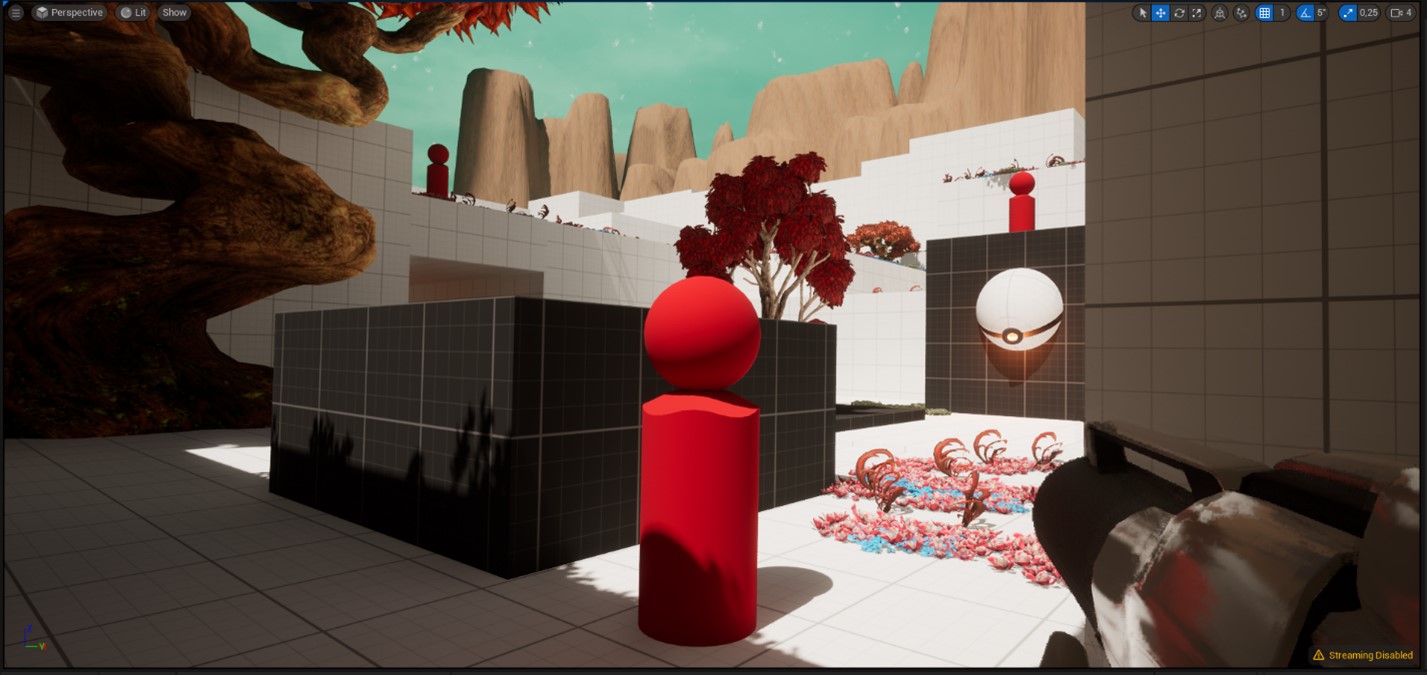
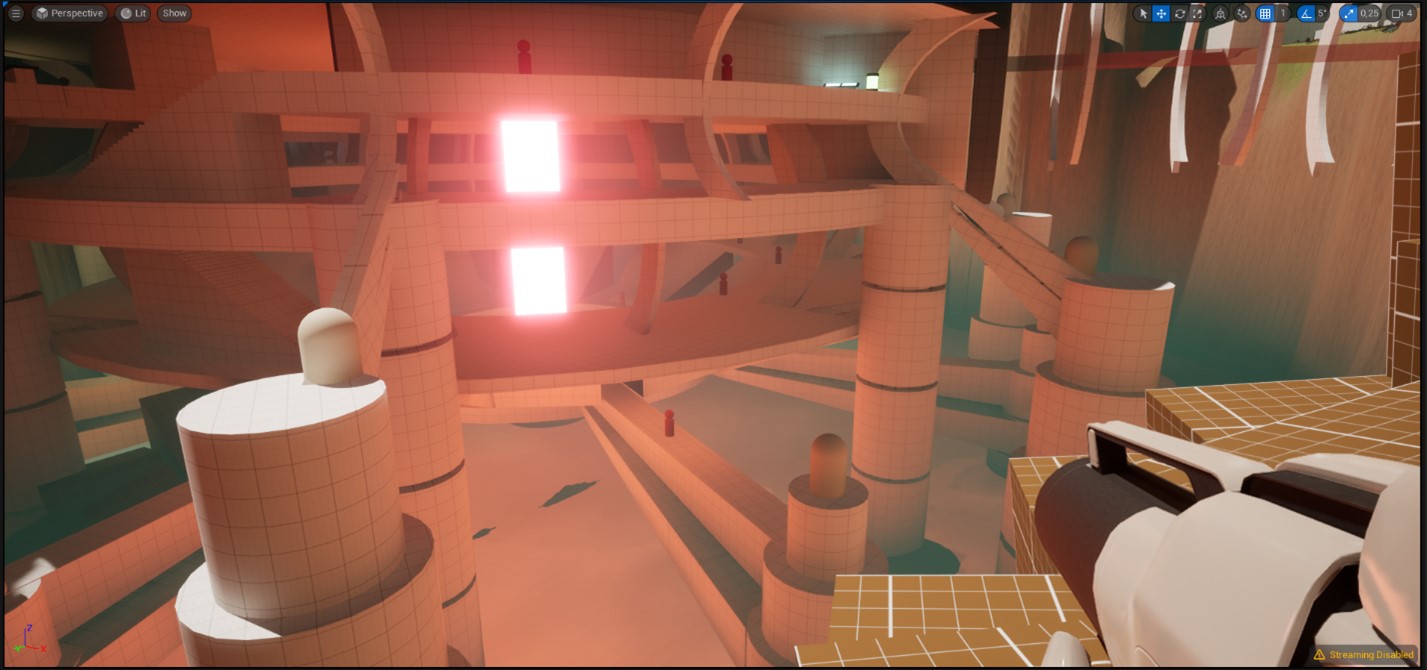
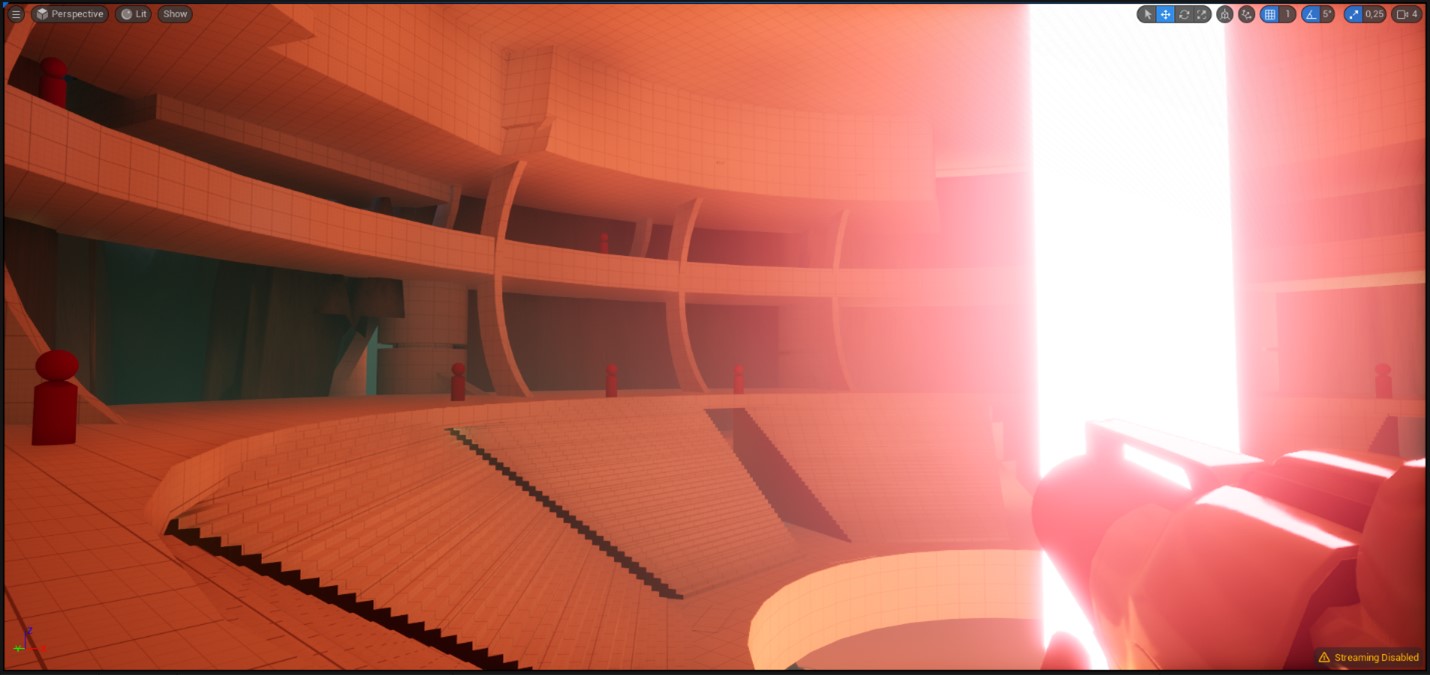
Pacing
When it comes to flow and pacing of the spaces, I relied mostly on two things: the space types (which is related to the space size) and the relation between spaces. By alternating between space types (narrow, intimate, prospect, open wide, etc.) it is possible to create a sense of progression, but most important is the relation between these spaces. There must be a logical order so that when the player walks through them it feels coherent. That´s why I do this since the very beginning. That’s what makes spaces feel organic and natural and keeps the player interested.
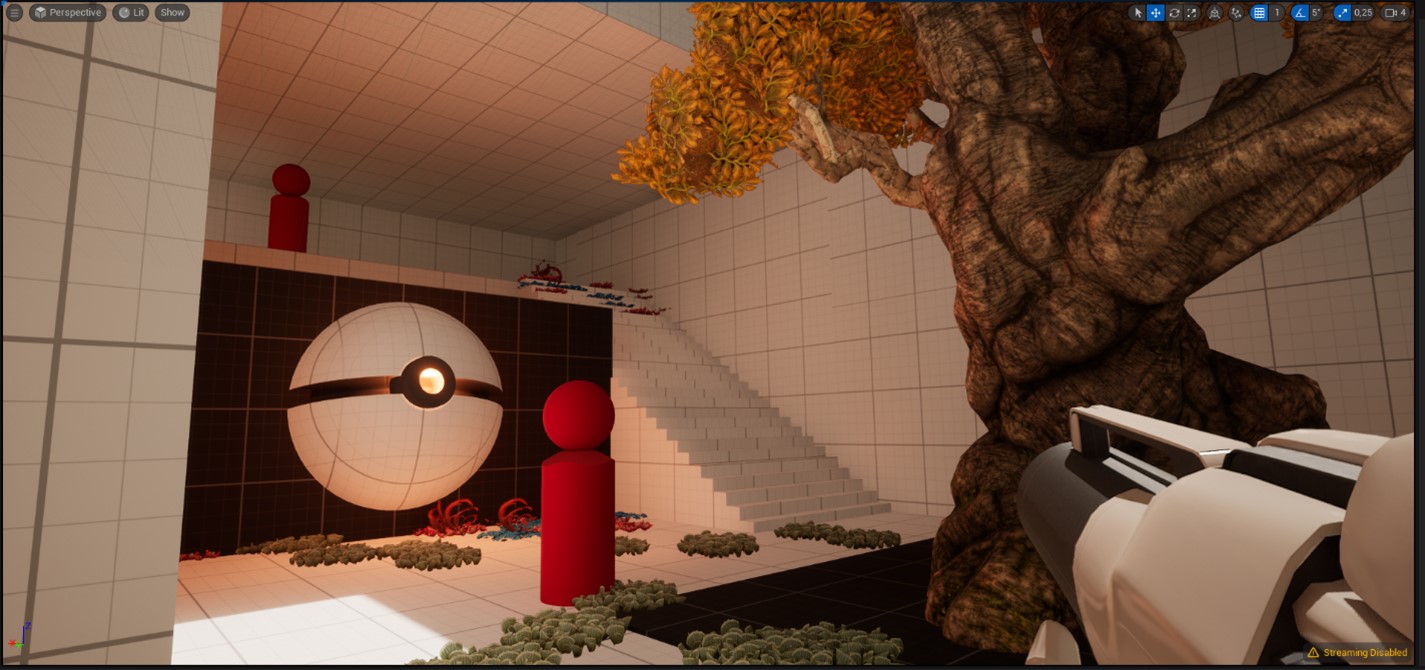
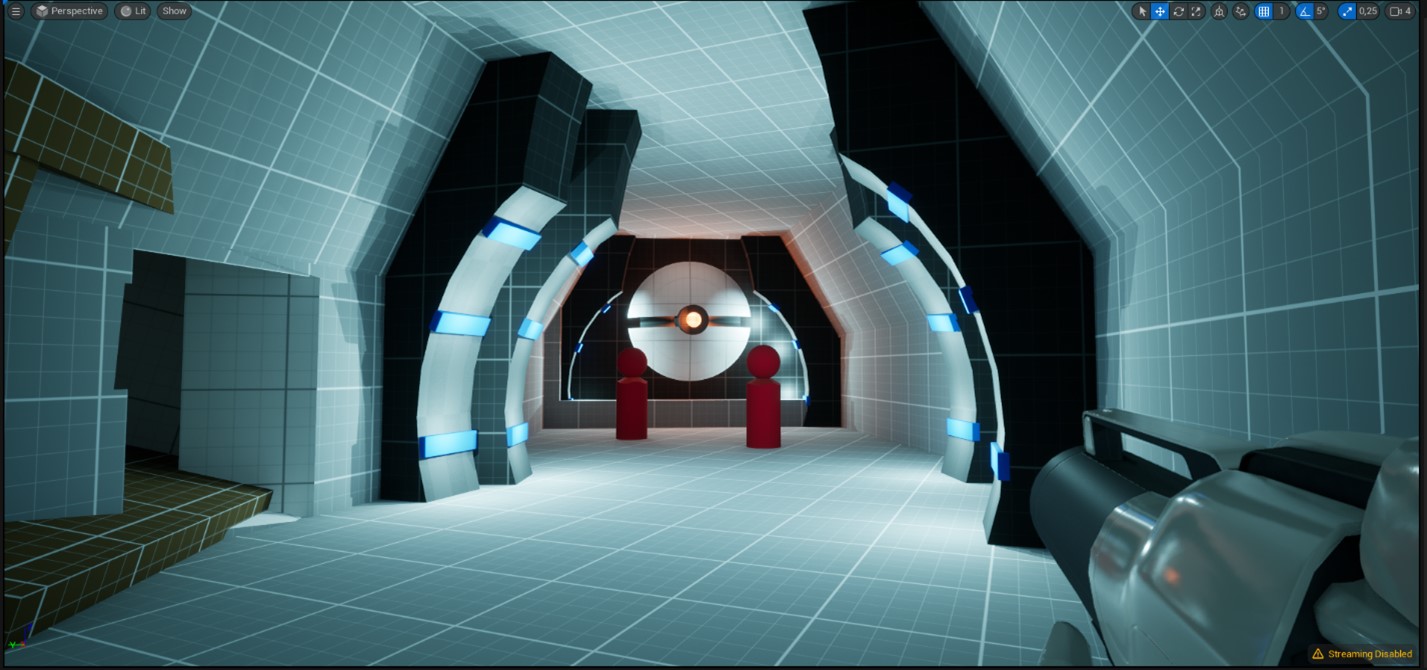
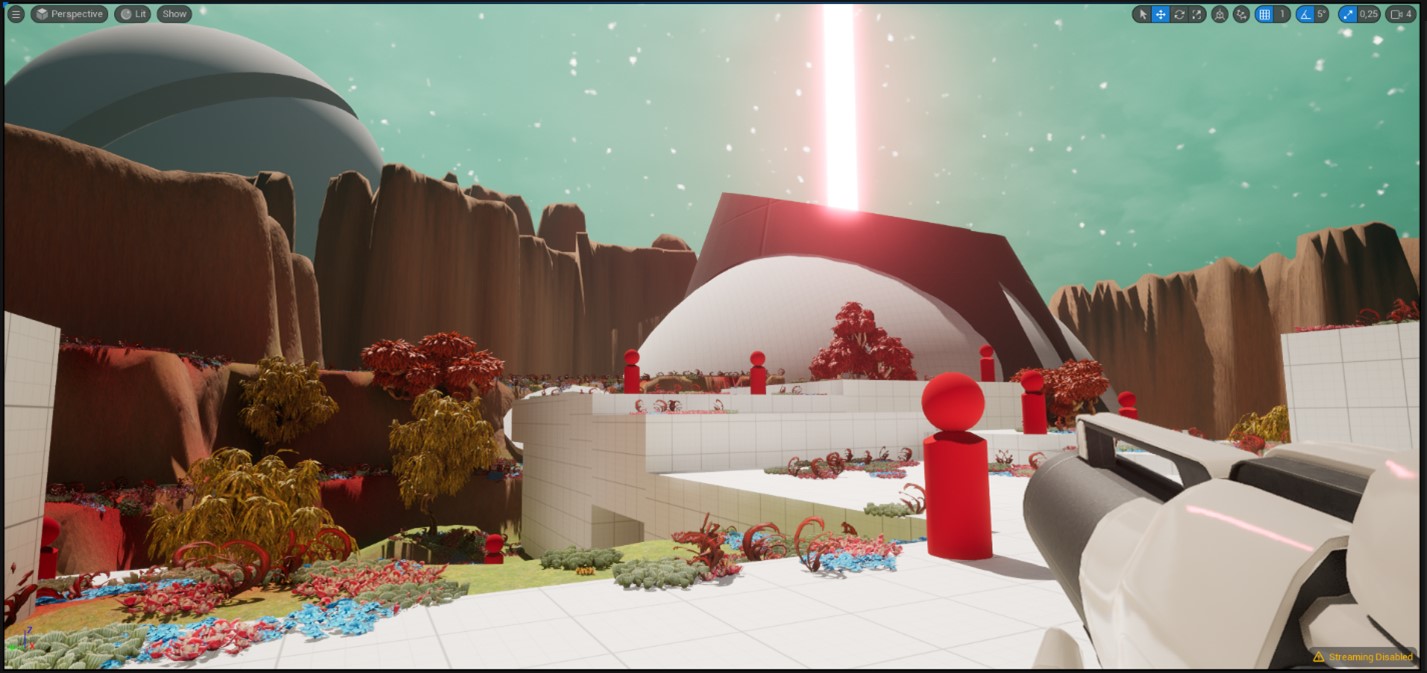

Composition
Another helpful element that I relied on was the composition (color, perspective, depth of vision, light and objects placing) to suggest the relation between spaces and guide the player through that. For instance, as shown in the pictures below, the perspective and strategical positioning of elements helps the player figure out where should they go organically and encourages them to explore. It also helped me to create different environments to keep the player interested, as shown in the pictures below. For this level, I placed a strong light beacon that would act as a landmark to guide the player, as seen in any picture showing the Power generation Center, even picture 7.1.
Depth Planes
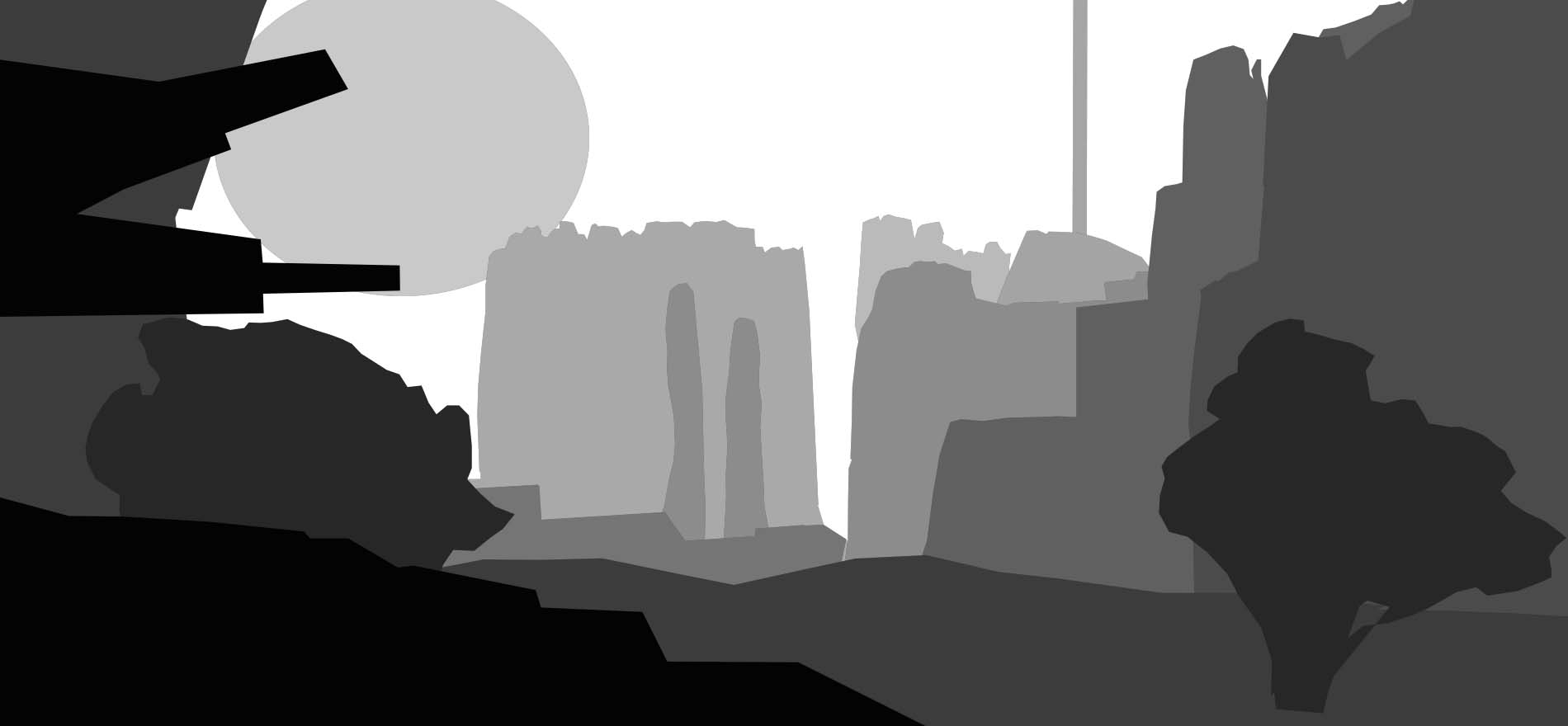
Framing: Rule of Thirds
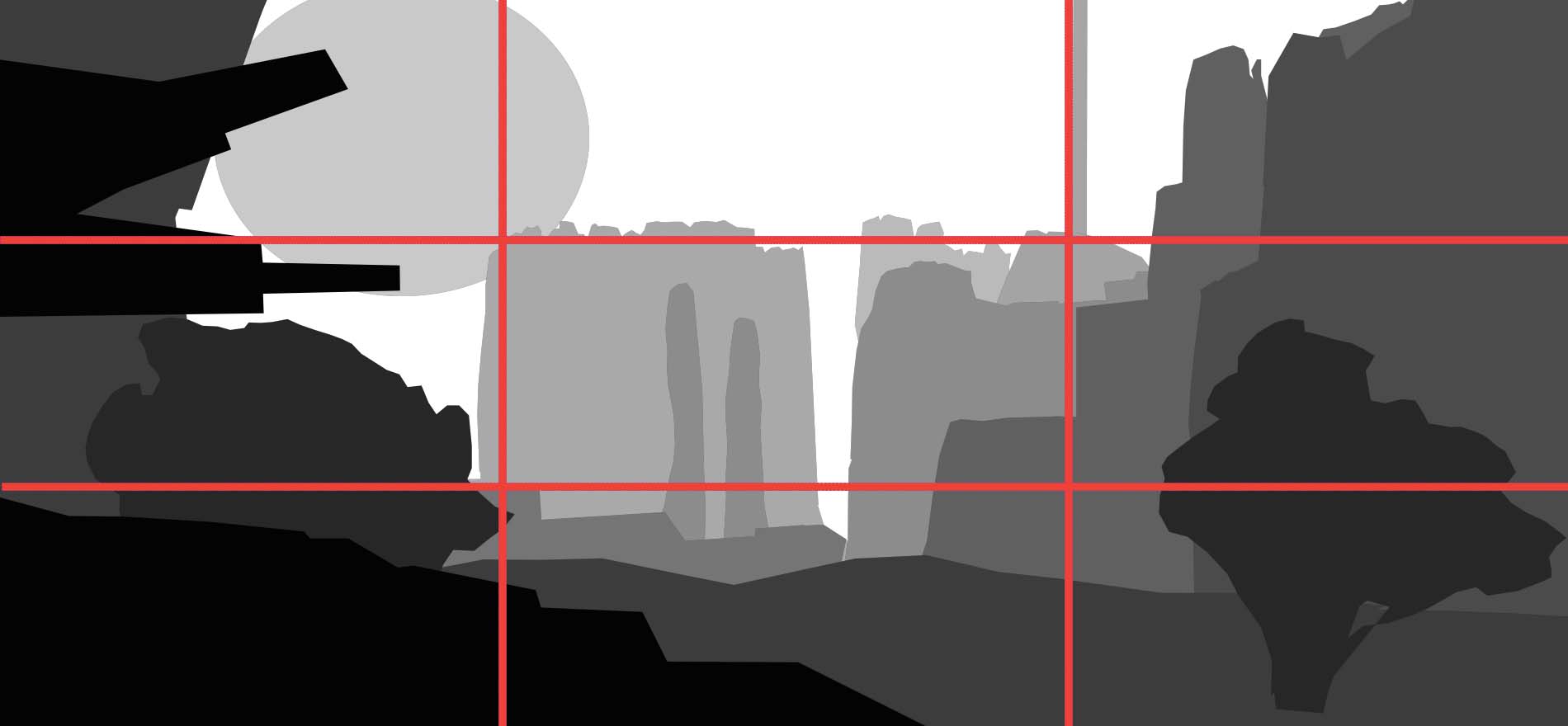
Color: Palette
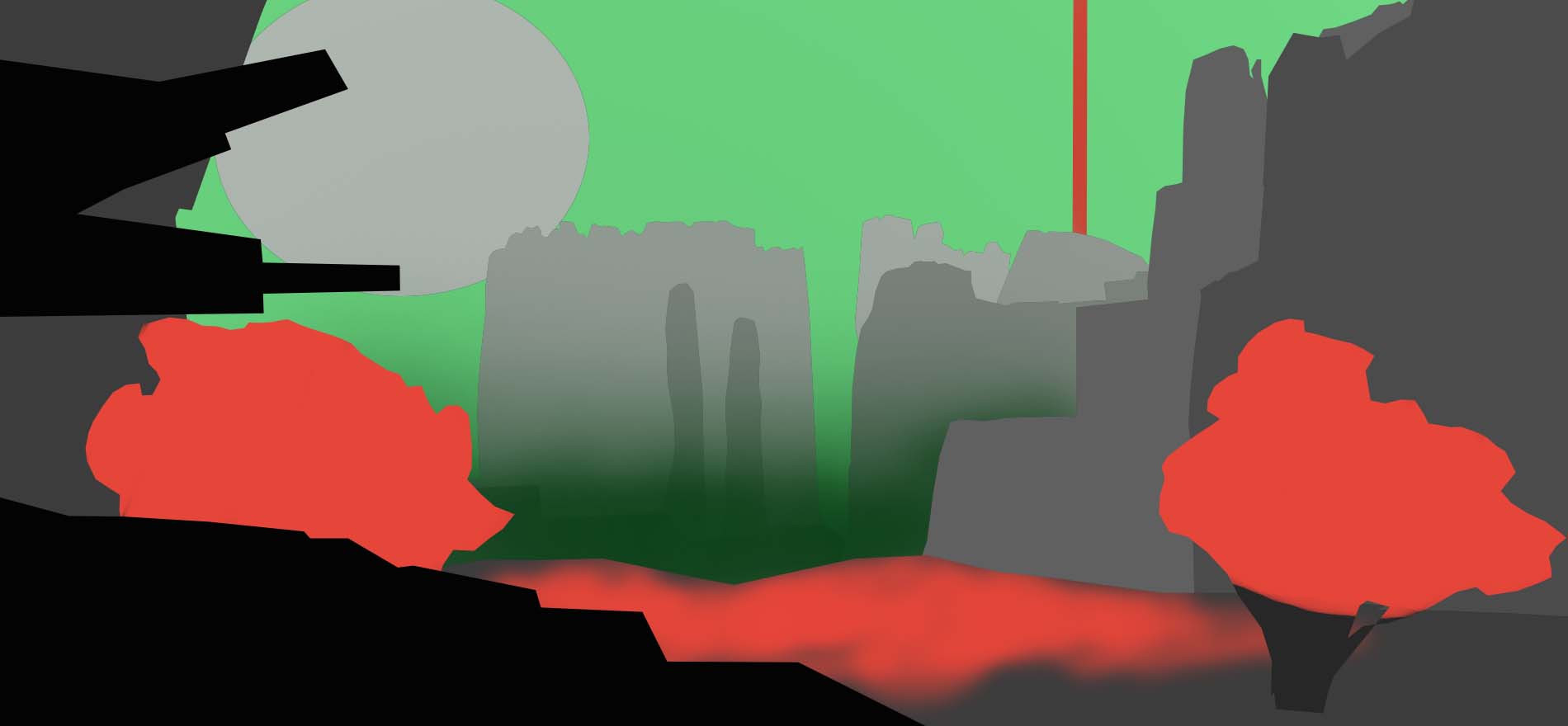
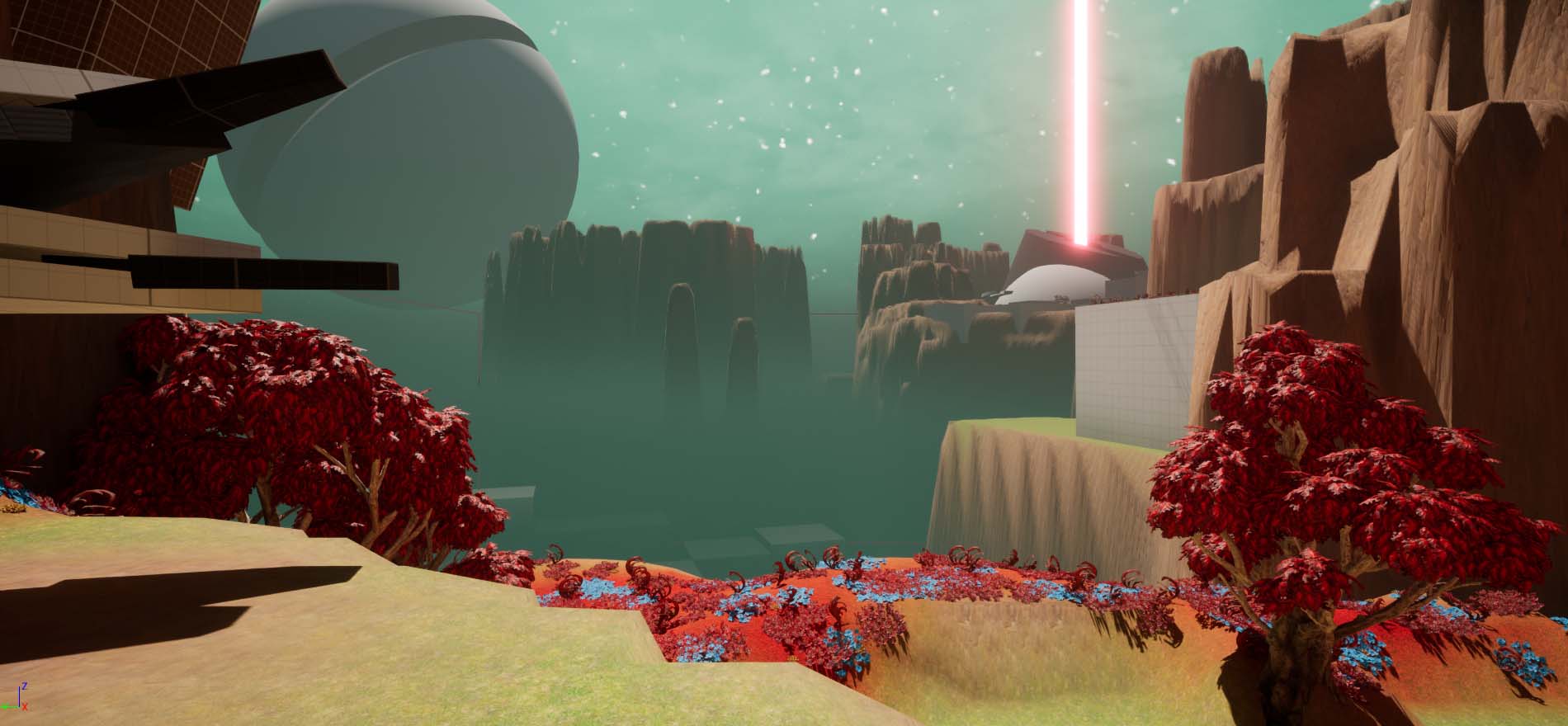
Gallery
